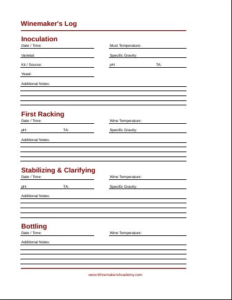Potassium sorbate (or k-sorbate) is a common additive used in wine kits. It’s usually added in the form of a power after fermentation has completed. But what does it do? What precautions should winemakers be taking when using it?
What does Potassium Sorbate do?

Simply put potassium sorbate is used to prevent spoilage by yeasts and molds in a finished wine. It does this by rendering these micro-organisms unable to reproduce. Continue reading “Using Potassium Sorbate When Making Wine”




